Hello Steemians,

Explanation of the PoH of Solana

Proof of History is basically Proof of Stake, but it adds in the special variable of Time. So PoH is not really a consensus mechanism, but it's a way of integrating time into the blockchain data. Something called timestamp is used to place a specific date and time on the blocks, so that it allows for a very fast sequencing of validators and that they know their order to submit blocks without having to communicate back and forth.
In the crypto world, we have some few different types of consensus algorithm like Proof of Work (PoW), Proof of Stake (PoS) and Delegated Proof of Stake (DPoS). Solana has come up with this new type of consensus algorithm called Proof of History (PoH).
Solana was founded in 2017 by a smart man called Anatoly Yakavenko, and they raised over twenty million dollars from multi coin capital. They are pioneering a concept called Proof of History. This concept is dealing with issues concerning Scalability, Game theories and Security.
It's really an impressive concept, because it's what happens before consensus, as it reduces massive amounts of messaging overhead for someone involved in the network, and this can lead to a quick transaction performance of 50,000 transactions per second.
Many blockchain have scalability issues, but the innovation of this PoH concept is really powerful to align the game theory incentives within the network, and it allows for the creation of historical records which shows that an event took place at a certain point in time.
The main objective of Solana, a blockchain that uses the PoH concept is to provide a scalable, secure and verifiable blockchain that supports high transaction per second performances.
How does Proof of History (PoH) work?
PoH relies on a new cryptographic concept called Verifiable Delay Functions (VDF), and you can solve a VDF with just one CPU core, using an exact set of sequential steps. With that, it becomes easy to determine how long it took for those steps to be applied, whereby solving the time challenge. Since this time challenge is solved, the processing weight of the blockchain has changed, making it lighter and faster. Proof of History mechanism in general, allows network speed that has never been seen before.

Explanation of Atleast 2 Use Cases of Solana

So far, Solana is impacting on several use cases which includes DApps, DeFi, NFTs and so on. Below are two use cases of Solana.
1. Mercurial Protocol: If you are interested in farming stable coins, you should definitely check out this protocol called mercurial finance. It's aiming to be the liquidity protocol for stable coin assets for Solana, and because of that they are offering robust yields for people who provides liquidity stable coins assets.
In this pool they have over 85 million dollars locked and still able to offer a yield of 12%. Anytime people trade in and out of this pool, all the liquidity providers are gonna earn a piece of that action.
Their main priority for the next couple of months includes:
- Pushing liquidity for stables on Solana.
- Improving utilization and yields for their pools.
- Creating programs for key Community members and so on.
2. Solanart: This is a marketplace where you can buy and sell some NFTs. They support Solpunks, Bold Badgers, and so on.
Many nfts have been listed in this market place, and alot more are still been listed. It's really a great Nft market place to check out for.

Detail and Explanation of the SOLA token

SOLA Token is Solana utility token which happens to operate on the Ethereum platform, and it was released on March of 2020. The Solana foundation made an announcement that over 488 million SOL token will be released in circulation.
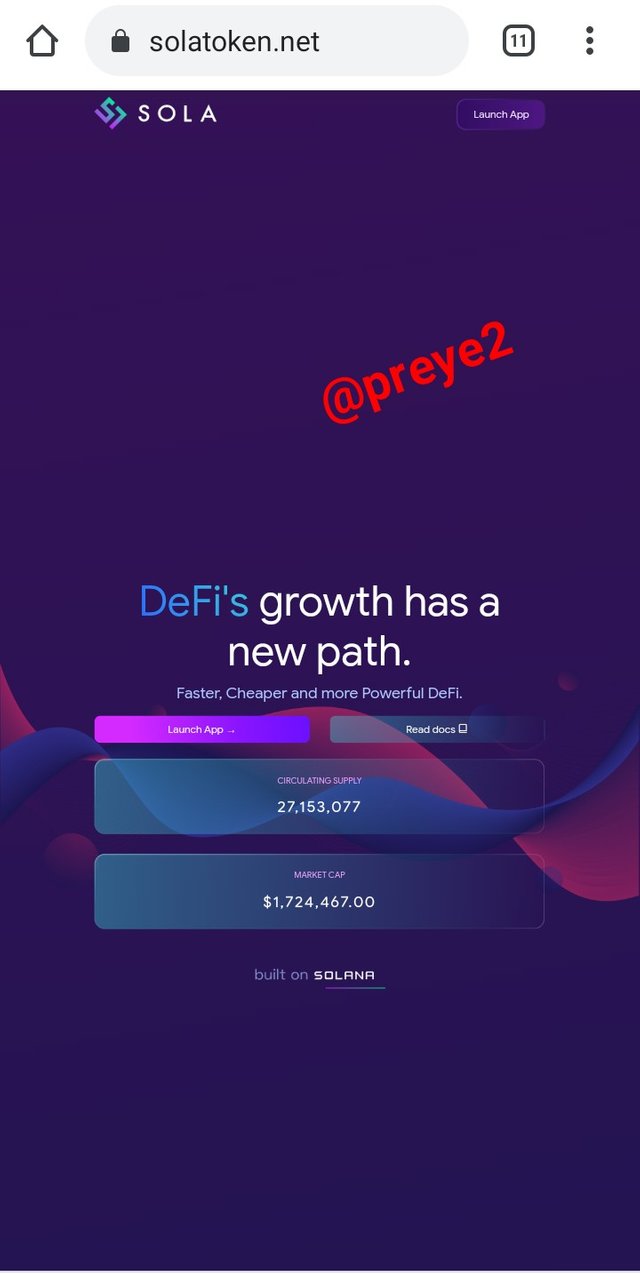
Source
The top exchanges where SOL Token is traded currently is **Raydium ($61,310), followed by (Dexlab) at about ($53,632.) The current highest volume trading pair of this token is USDC ($114,948).
There are 4 main Use Cases for SOL, and they Includes
- Staking of SOL to validate
- Participating in governance
- Receiving of rewards in SOL
- Paying of gas fees with it.
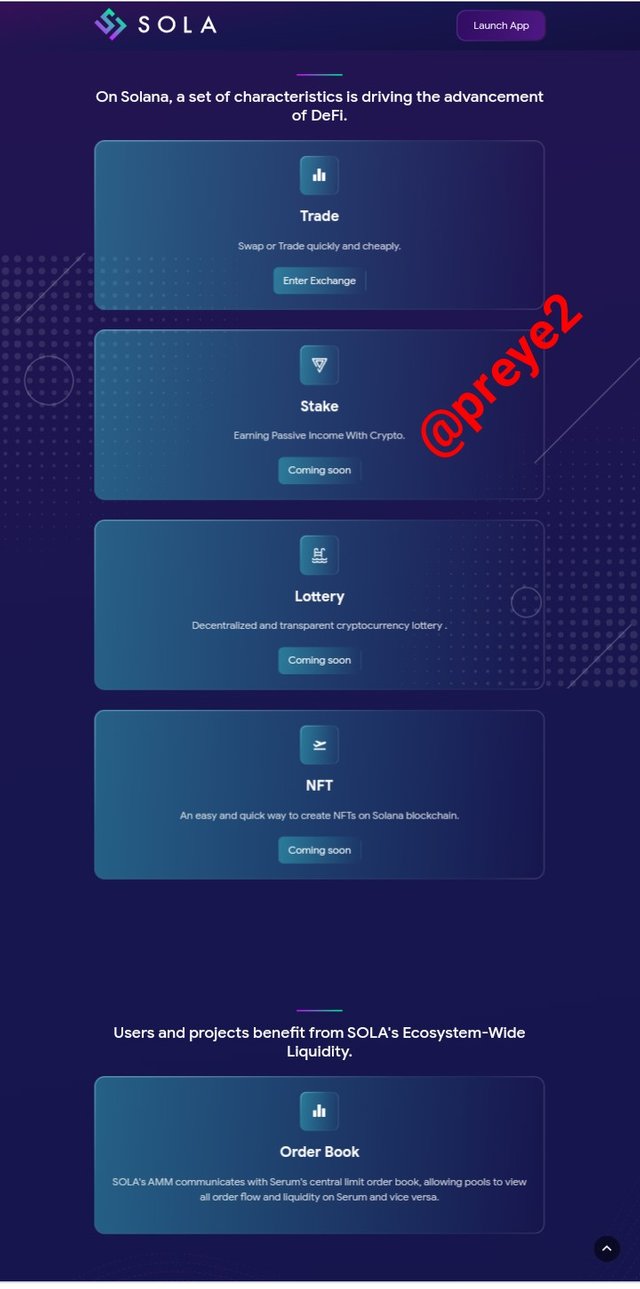
About 2 weeks ago, SOL token reached it's all time highest ($0.,084325), and they are lots of speculations that the price will push really big in the nearest future.
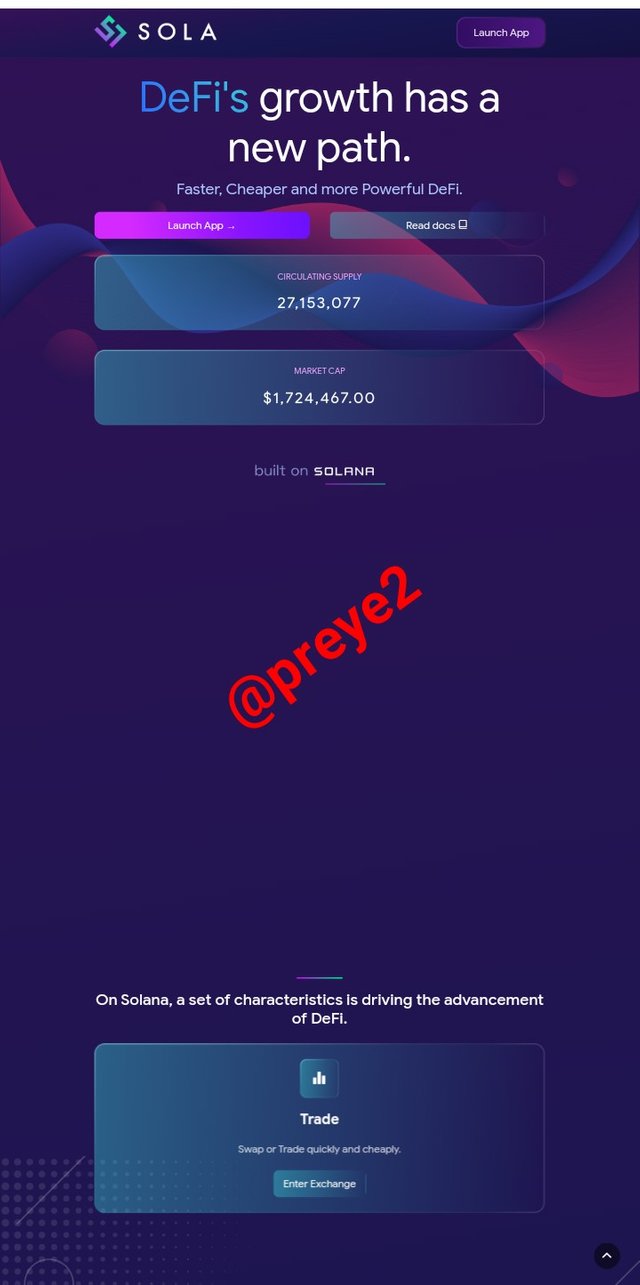
According to CoinGecko.com, the current price of SOL token is 0.00038310, with a market cap of 10,4,02.28, a circulating supply of 27,153,077, and a ranking of 1823.
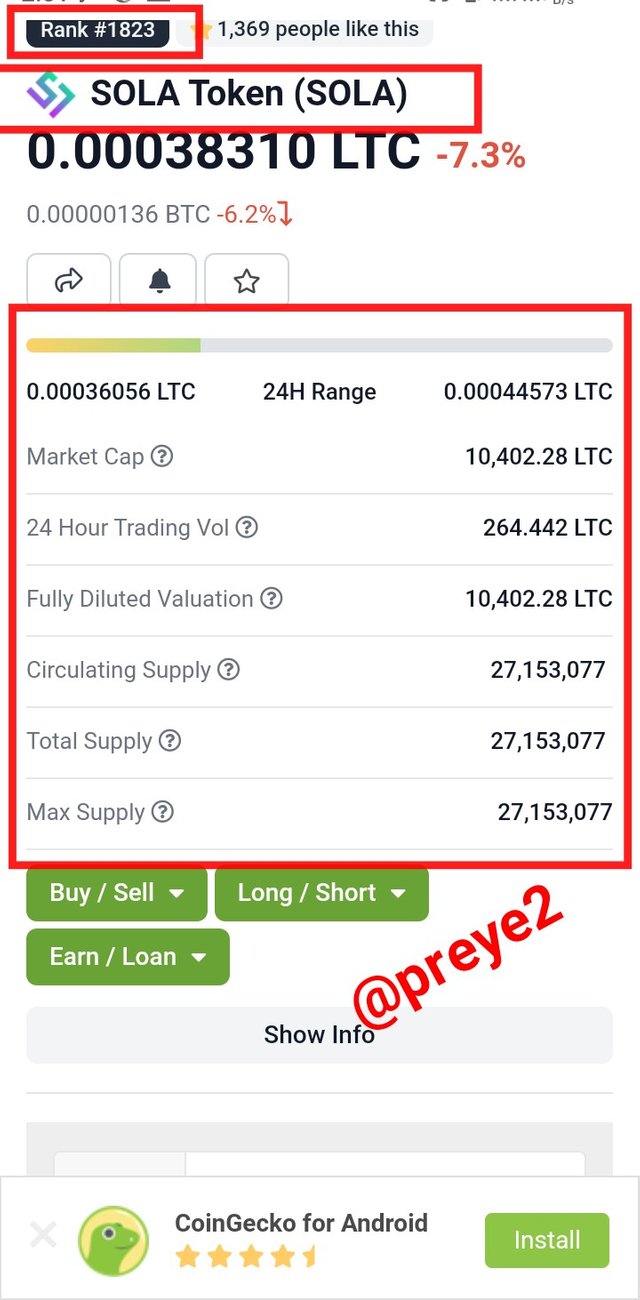
Source

When and Why did the Solana Blockchain see it's operation interrupted?

It was on the 14th of September 2021, the node operators of Solana coordinated to restart the blockchain with the aim of bringing the network back online.
The blockchain started having problems after "resources exhaustion" on the network caused it to stop validation for some hours. The Solana ecosystem with billions of dollars was frozen for some hours.
According to the founder of Solana (Anatoly Yakavenko), the cause of this interruption was by the bot trading of Grape protocol's Tuesday token offering. The flood of transactions on Tuesday morning forced the network to past it's limit, and this activity resulted to a forking that took multiple nodes offline.
The Solana mainnet has experienced this type of interruption in December, and the Solana core contributors and validators usually finds a way to resolve the issue.

Checking the last block generated in Solana and making an approximate calculation how many second does it take blocks to be generated

For the performance of this task, I will be using the SolanaScan block Explorer.
As of the time of performing this task, the last block that was generated in Solana was #99464361
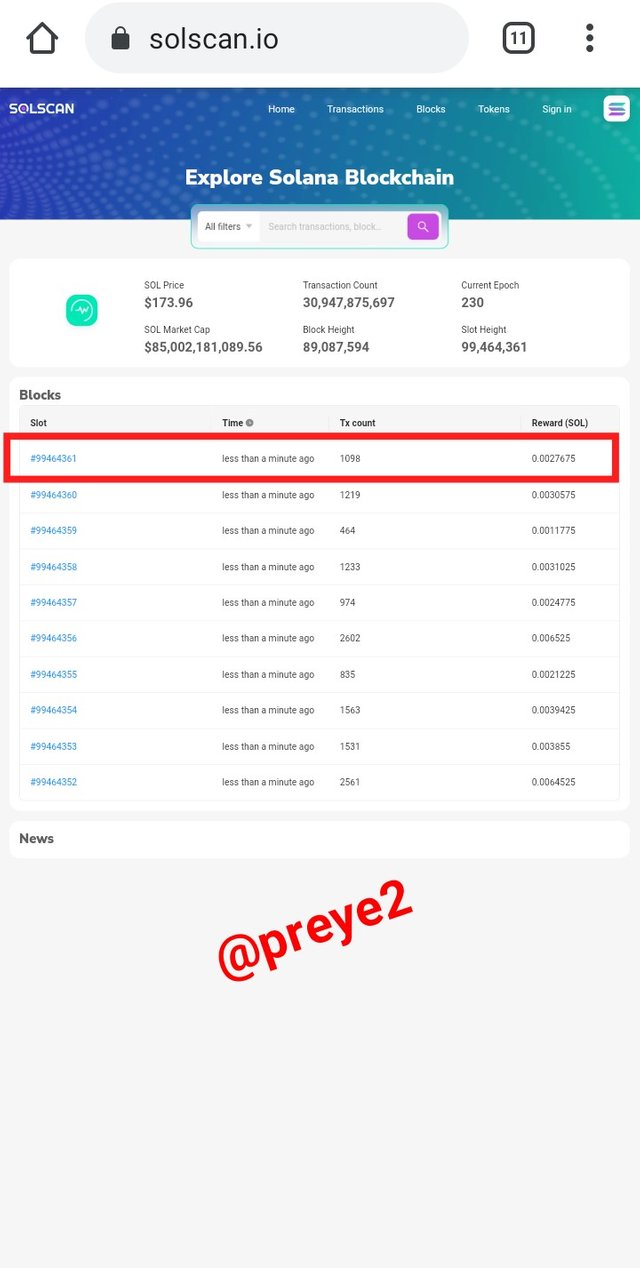
Source
Here are the details of the last block that was generated.
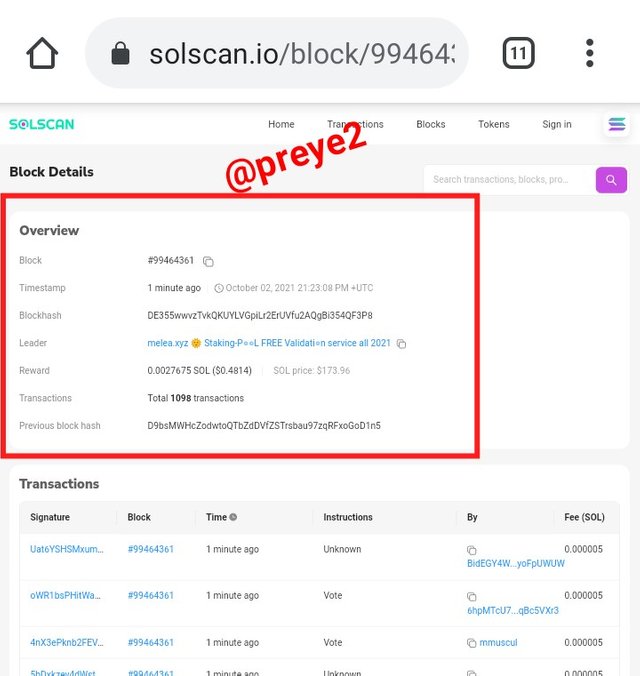
Source
Block: #99464361
Blockhash: DE355wwvzTvkQKUYLVGpiLr2ErUVfu2AQgBi354QF3P8
Reward: 0.0027675 SOL ($0.4814)Total number of transactions: 1098
SOL price: $173.96
Previous block hash: D9bsMWHcZodwtoQTbZdDVfZSTrsbau97zqRFxoGoD1n5
Below is the calculation of how many blocks per second have been generated in Solana
As you can see on the screenshot above, this block explorer calculates per minutes the time it took for blocks to generate is "less than a minute." Using the initial blocks and the current one, you would see that it took only few seconds for blocks to be generated.

Conclusion
Working with Solana is going to help you realize that this innovation will change blockchain forever, because it's something that allows for over 50,000 transactions per second, and allowing DApps to come on and use this application. I see PoH as the future.
In general, this topic is very educative and I thank Prof. @pelon53 for bringing this topic to us this week .
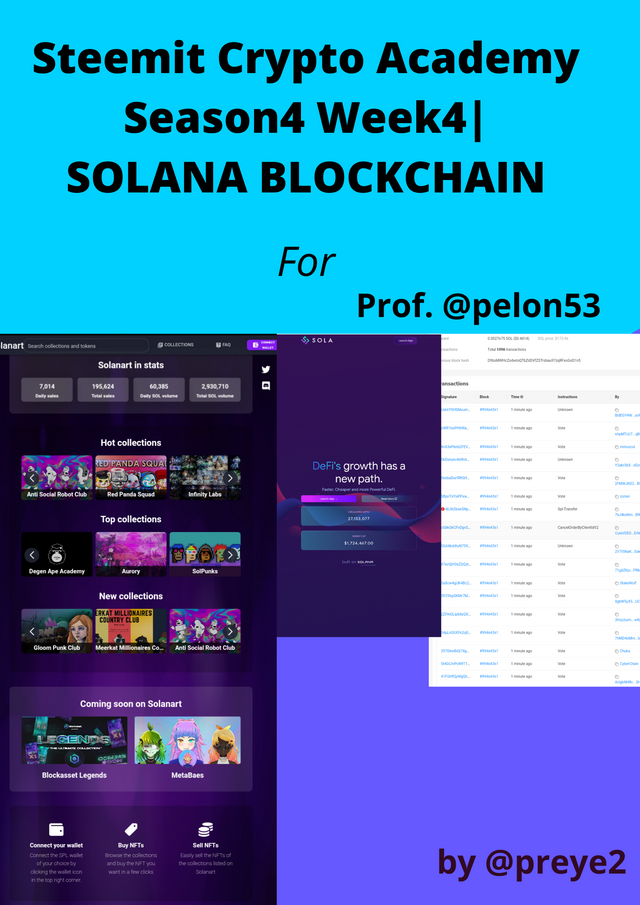
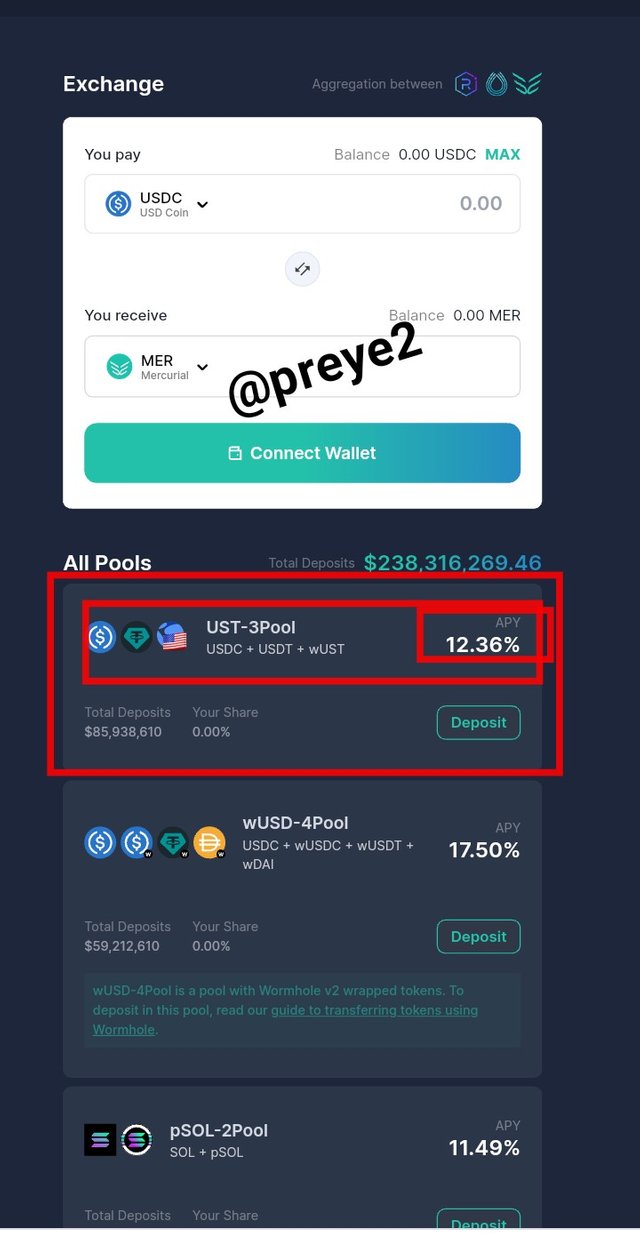
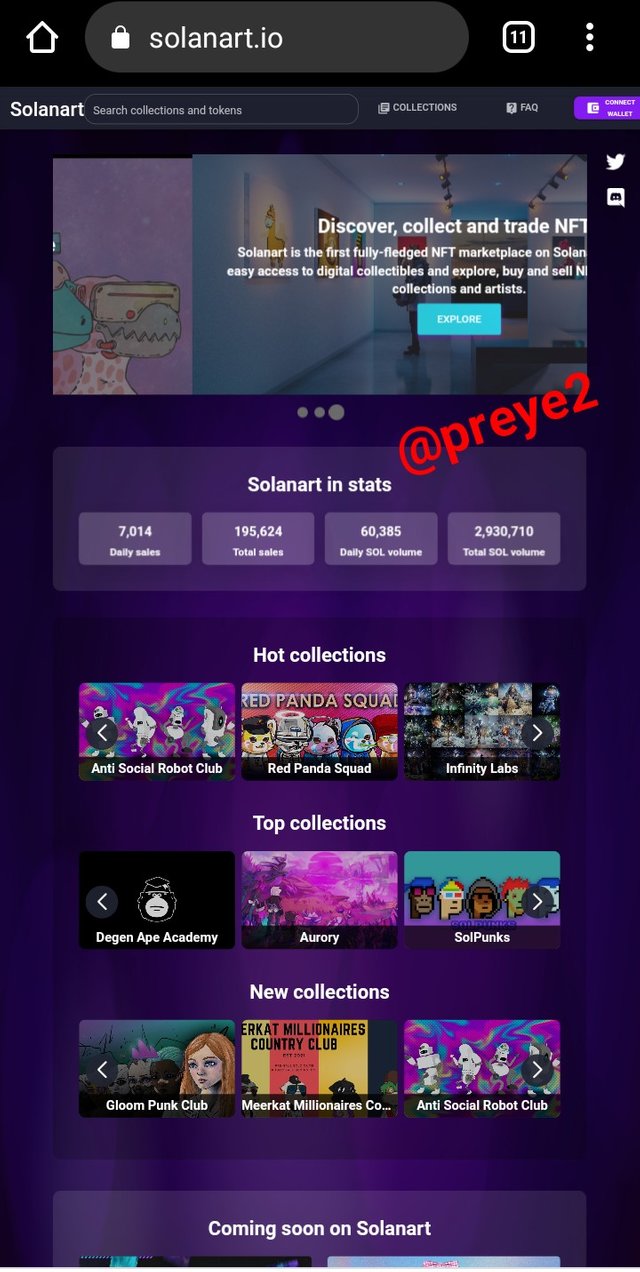
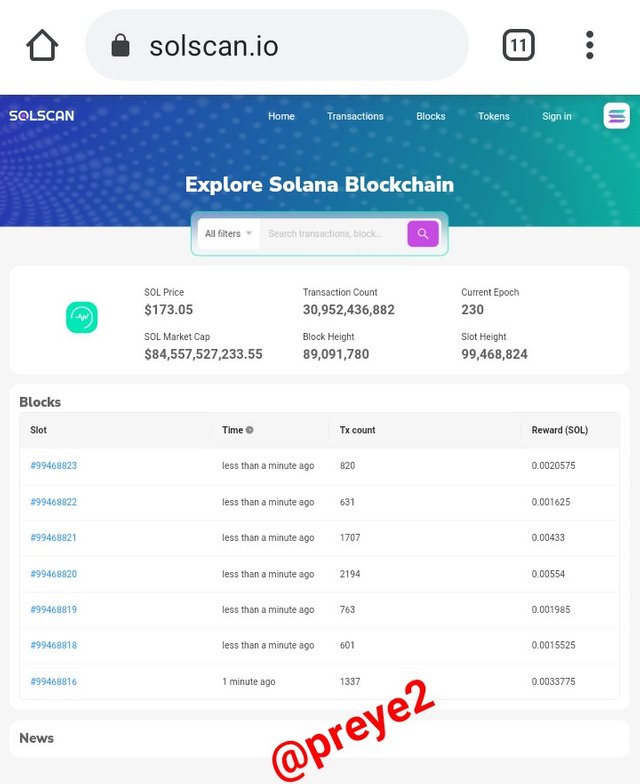
Gracias por participar en Steemit Crypto Academy Season 4, Semana 4:
La información investigada fue buena, sin embargo es necesario mejorar la investigación.
La interrupción de Solana el mes pasado puede mejorar la información, dando algún twitter del equipo de Solana.
No vi el bloque 1 y por lo tanto tampoco los bloques por segundo reales que se han generado en Solana.
Recomendaciones:
Profundizar en la información.
Espero seguir leyendo tus publicaciones.
Calificación: 7.5
Downvoting a post can decrease pending rewards and make it less visible. Common reasons:
Submit
Thanks for your guidance and remark Prof. @pelon53, I promise to improve in my next task
Downvoting a post can decrease pending rewards and make it less visible. Common reasons:
Submit